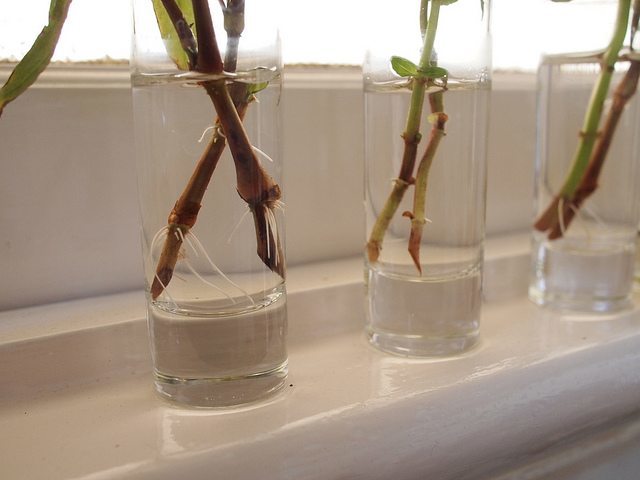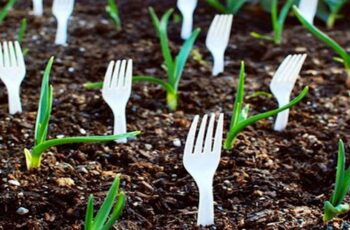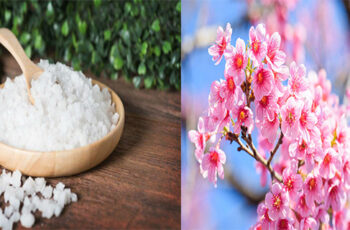Ad Blocker Detected
Our website is made possible by displaying online advertisements to our visitors. Please consider supporting us by disabling your ad blocker.

Disclosure
I’m a participant in the amazon associate program which means I’ll earn a small commission (at no extra cost to you) when you buy through some of the links on this website, in which case I thank you.
Most annual herbs should be grown by planting seeds, and this includes a few herb garden favorites, like dill and cilantro. Surprisingly, though, most perennial herbs can be propagated very easily by taking cuttings from healthy plants.
Learn how to take soft-stemmed cuttings and how to get your cuttings to form roots.
SOME BASIC INFORMATION TO GET YOU STARTED
For soft-stemmed herbs like basil, mint, lemon balm, and stevia, all you need is a glass of water to place the cuttings in, a sunny windowsill, and a bit of patience.
Woody herbs like thyme, rosemary, sage, and oregano are typically tougher to propagate and require that the cutting comes from new, green growth. Some require soil instead of a glass of water, and some need a little help from a rooting hormone. Growing any of these herbs from cuttings is possible, and once you master the technique, you can create quite an impressive herb garden by taking cuttings from established perennials.
There are even a few annuals that can be propagated by cuttings, like parsley and basil, to help round out your herb garden.
Start with an easy-to-propagate herb, like basil, or mint. Once you have had a bit of success, move on to trickier herbs, like oregano, or thyme. Learn about rooting hormones, and use this article as a guide of reference when you need to remember the best technique for a particular herb.
Drop your cuttings in water, or dip them in a rooting hormone and plant them in soil, and in just weeks, your cuttings will be forming new roots. As soon as the roots have formed, you can transplant them into pots or move them outdoors.
If you have a few gardener friends, you know that gardeners love to share. Just a few successful cuttings taken from a friend could lead to an immense wealth of fresh herbs, that are always within reach.
SHOULD YOU USE WATER OR SOIL TO ROOT YOUR CUTTINGS?
Just because you can use water to root many cuttings doesn’t mean that you should use water. Because the soil has all the nutrients that a plant needs to survive and thrive, it is much more effective to allow your cuttings to develop roots in soil instead, as long as you have the means to do so. However, for rooting your cuttings, you don’t want to use regular soil or even standard potting soil.
Instead, you will need to use a lighter substrate, which you can find at any garden center or nursery, or make yourself. Soils labeled seed starting mix make great rooting medium soils, or you can also make your own out of a combination of perlite, vermiculite, sand, coconut coir, sphagnum moss, and potting compost.
Some people use pure sand for rooting their cuttings, but it can be too dense and can have a tough time draining if it is not mixed with something else. Try using a combination of equal parts potting compost and sand. You can use a glass of water if you prefer, but you will likely have better results in a rooting medium.
If you decide to use a glass of water and a sunny windowsill to root some of your cuttings, be sure to use a clean glass and good water. If the tap water in your area is high-quality (do you drink the tap water in your area?) and low in chlorine, using tap water is fine. However, filtered water and spring water are better choices for developing plants.
Don’t use distilled water for cuttings, as it doesn’t have any trace minerals in it, which are important for new plant development, especially when they have no soil to rely on for nutrients. Avoid using tap water that is high in chlorine, as it can burn plant tissues. No matter what kind of water you use, be sure to change it as often as possible. Changing the water every other day is sufficient, but changing it every day is better.
USING ROOTING HORMONES
When it comes to developing roots, a rooting hormone will increase your success rate and speed up the time it takes for cuttings to develop healthy root systems. Whether you are placing your cuttings into water or soil for root development, each cutting will have a better chance of growing new, strong roots. You can buy rooting hormone powder, but you can also easily and cheaply make it yourself using household items. Click here to learn more about making your own rooting hormones.
TAKING A CUTTING
Take your cuttings in the morning time when garden plants are firm and fresh. Look for new growth on side shoots, as long as the side shoots don’t have flower buds attached. Because some cuttings will fail, you want to take more cuttings than the number of plants you want. If you want one plant, take two or three cuttings. If you want three plants, take about six cuttings.
Using a sharp, clean blade, take a cutting of about three to six inches in length. Being careful not to crush the stem, cut just below a leaf node, which is where a leaf set joins to the stem. The reason why cuttings are taken just beneath leaf nodes is that this is the area where a plant’s natural rooting hormones are most active. Cut the stems at an angle to allow the largest possible surface area for roots to form.
Remove the lower leaves on the cutting, leaving one-half to two-thirds of the stem bare. Leave only a few sets of leaves at the top of the cutting. Some people like to dip each cutting into a rooting hormone powder. This is encouraged as it can increase the success rate for your cuttings developing new roots, but rooting hormones do not guarantee success, so it is up to you whether you want to use them or not. Whether you are using water or a pot of rooting medium to root your cuttings, they are now ready to be placed into a glass of water or planted in a pot.
For successful propagation, cuttings must be taken at the right time, especially for plants that change their growth pattern with seasonal changes. There are different types of cuttings depending on the age of the stems they come from.
Types of Cuttings
Softwood Cuttings
Taken in late spring or early summer (May-June) from new growth that has appeared that season. The soft, flexible, green stems should be kept moist with frequent misting. They root easily and settle in the same season.
Semi-ripe cuttings
taken in summer (June – August) from slightly ripe stems of that season, they may take slightly longer than softwood cuttings to root, but the summer heat favors root growth.
Hardwood Cuttings
Taken in fall and winter from mature, woody stems, they are ready for planting next spring. Ideally, cuttings should be prepared as soon as the shrubs begin to shed their leaves so that they can have enough roots before the spring sprout sprouts.
You can use different parts of the stem to grow new plants, but some plants can also be propagated from leaf and root cuttings.
Tip Cuttings
A cutting 6 to 8 inches long from the growing tip of the stem is taken just below a node. Most herbs can be grown from cuttings.
Basal cuttings
A side branch is taken, cutting it as close to the main stem as possible. Most plants grow easily from basal cuttings 6 to 10 inches long.
Stub cuttings
Many shrubs require some of the old stems for successful rooting. The lateral branches are torn from the mother plant so as to contain part of the main stem (heel).
Stem Sections
Many cane-forming plants can be propagated by the middle sections of their long stems. Each 4-6 inch section containing a few nodes can sprout roots at the lower end and new top growth from side buds. Since sections can be the same thickness at both ends, the bottom ends should be marked as soon as you split the rod.
Root Sections
Some plants like sumac and California tree poppy are easier to grow from root cuttings than from stem cuttings. A few roots can be dug up during the dormant season without harming the parent plant and divided into several sections.
Leaf Cuttings
Many succulents grow new plants from whole leaves, but snake plants and begonias can be propagated from sections of the stem.

